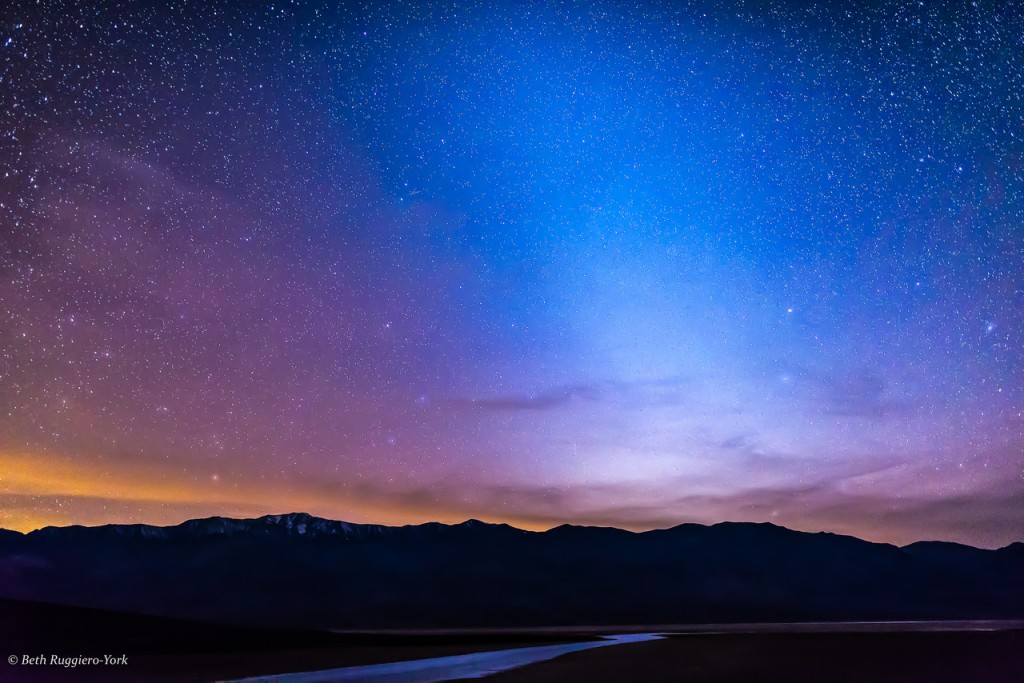Just after full twilight has passed about 90 minutes after sunset, look to the west in a dark place in the Northern Hemisphere, and you will see a glowing pyramid of white light rising from the horizon. You may dismiss it as city light pollution, but don’t turn your back on it! It’s time to start shooting.

This is what is called the zodiacal light, only visible for about an hour after the end of astronomical twilight (about 90 minutes after sunset) during February, March, and April in the mid-northern latitudes of the Northern Hemisphere. In the Southern Hemisphere at this time of year, you can see it before sunrise. The pattern reverses itself in August through October.
So what is this mysterious “zodiacal” light? Simply put, it is sunlight reflecting off of dust particles in the atmosphere along what is called the ‘zodiac’. The origin of the horoscope you may think of, the zodiac is the circle of 12 divisions (the signs of the horoscope) that roughly defines the path of the Sun in our galaxy through the year. The dust creates a disc-like cloud in the Solar System, which is called the ‘zodiacal cloud’. So, at these times of the year, the dust, the Sun, the Earth, and the zodiac all line up to produce the amazing zodiacal light.
To photograph this remarkable and beautiful phenomenon, you need to be in a dark sky location free from much light pollution in the mid-northern latitudes as I mentioned above. Then, mount your fastest wide lens on your camera, and mount your camera on a sturdy tripod. Establish infinity focus, compose the shot, and start shooting! If you have not done night photography before, an easy rule of thumb.
To learn more about night photography, check out my book, Fun in the Dark: A Guide to Successful Night Photography, available for purchase at www.funinthedark.net.
Beth Ruggiero-York is an instructor of long exposure and night photography for Bryan Peterson School of Photography. She teaches workshops for Arizona Highways Photo Workshops. You can see her bio and more of her work at www.bethruggiero.com.
– BPSOP Instructor: Beth Ruggiero
Beth Teaches:










